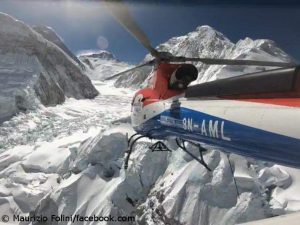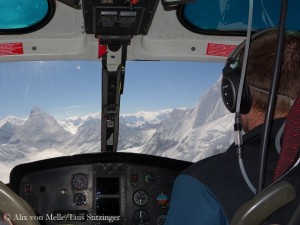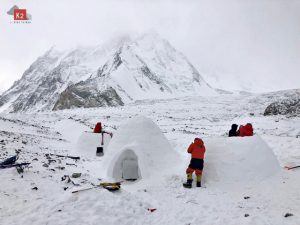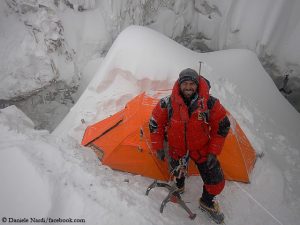New guidelines for helicopter rescue on Nepal’s mountains
A committee is to get to the bottom of it. Since Friday, new guidelines for helicopter rescue have been in force in Nepal, with which the government wants to prevent insurance fraud with “fake rescue flights” in the future. A “Tourist Search and Rescue Committee” will monitor all rescue operations. The committee includes representatives of the ministries of home and of health as well as of the Nepal Mountaineering Association (NMA), the Himalayan Rescue Association (HRA), the Civil Aviation Authority of Nepal (CAAN) and the tourist police. Helicopter companies, expedition and trekking agencies, hospitals and insurance companies are now obliged to provide all details of rescue flights and medical care as well as insurance invoices in a timely manner so that the committee can review them. In the event of irregularities, the committee is also responsible for punishing the black sheeps in the sector.
No more intermediaries
The government dropped its original plan to place the rescue operations completely in the hands of a police unit in the Ministry of Tourism. Now the expedition and trekking agencies have to take on their responsibility. They are to arrange everything necessary to rescue their clients in case of emergency. Only the patient and a helper or guide will be allowed to be flown by the rescue helicopter. Hospitals are to provide the agency concerned with a cost estimate for the treatment of the client. Intermediaries between insurance companies and tourism agencies are completely banned from the rescue service.
CAAN to cap costs for rescue flights
After last spring’s climbing season, massive insurance fraud with “fake rescue flights” had been uncovered. Guides are said to have urged climbers and trekking tourists even when they felt unwell to get on a rescue helicopter and be flown back to Kathmandu for treatment. These flights were then invoiced to the insurance companies – often at a completely overpriced rate. A commission of inquiry of the Nepalese Ministry of Tourism named eleven companies from the helicopter and trekking industry as well as four hospitals in Kathmandu that allegedly cheated insurance companies. But this is probably only the tip of the iceberg.
The commission found out that some mountain guides had also mixed baking soda into the food so that their clients got diarrhoea and were flown out by rescue helicopters. In addition, helicopters were packed with allegedly sick climbers and trekking tourists, afterwards the insurance companies should pay for several individual flights instead of one. According to the government more than 1,300 helicopter rescue flights were reported in the first five months of the year alone.
International insurance companies had threatened not to cover any more rescue flights in Nepal unless the government intervened. They demanded to cap the cost: to 4,000 dollars per flight. The Civil Aviation Authority of Nepal is now to set a cost ceiling, depending on flight hours, distance and rescue altitude.
Animal with four back legs
But is a committee really the smartest solution to get a grip on the problem? I am skeptical. Committees usually do not tend to work quickly and effectively – or as the British author John le Carré wrote (in his spy novel “Tinker Tailor Soldier Spy”): “A committee is an animal with four back legs.”









